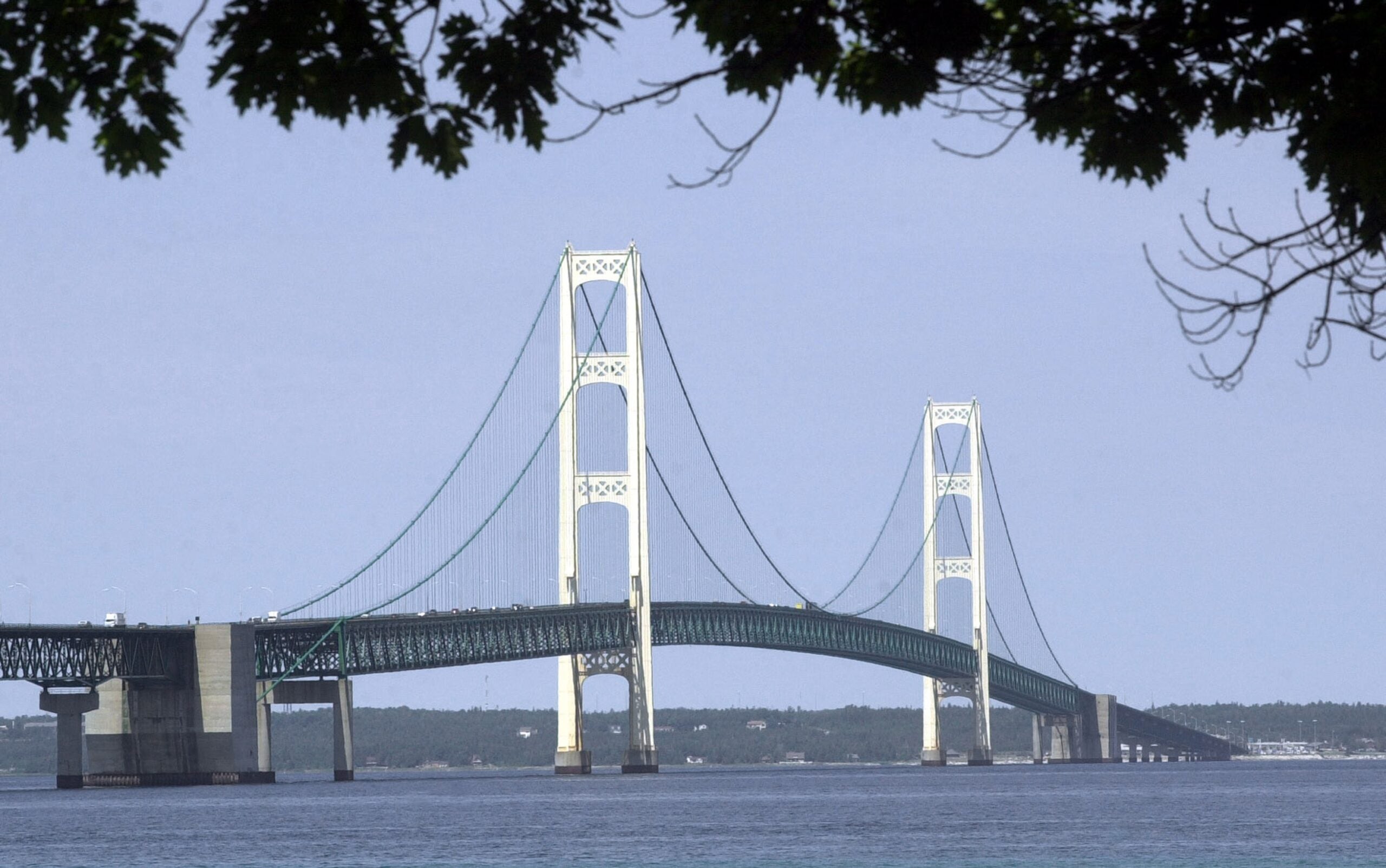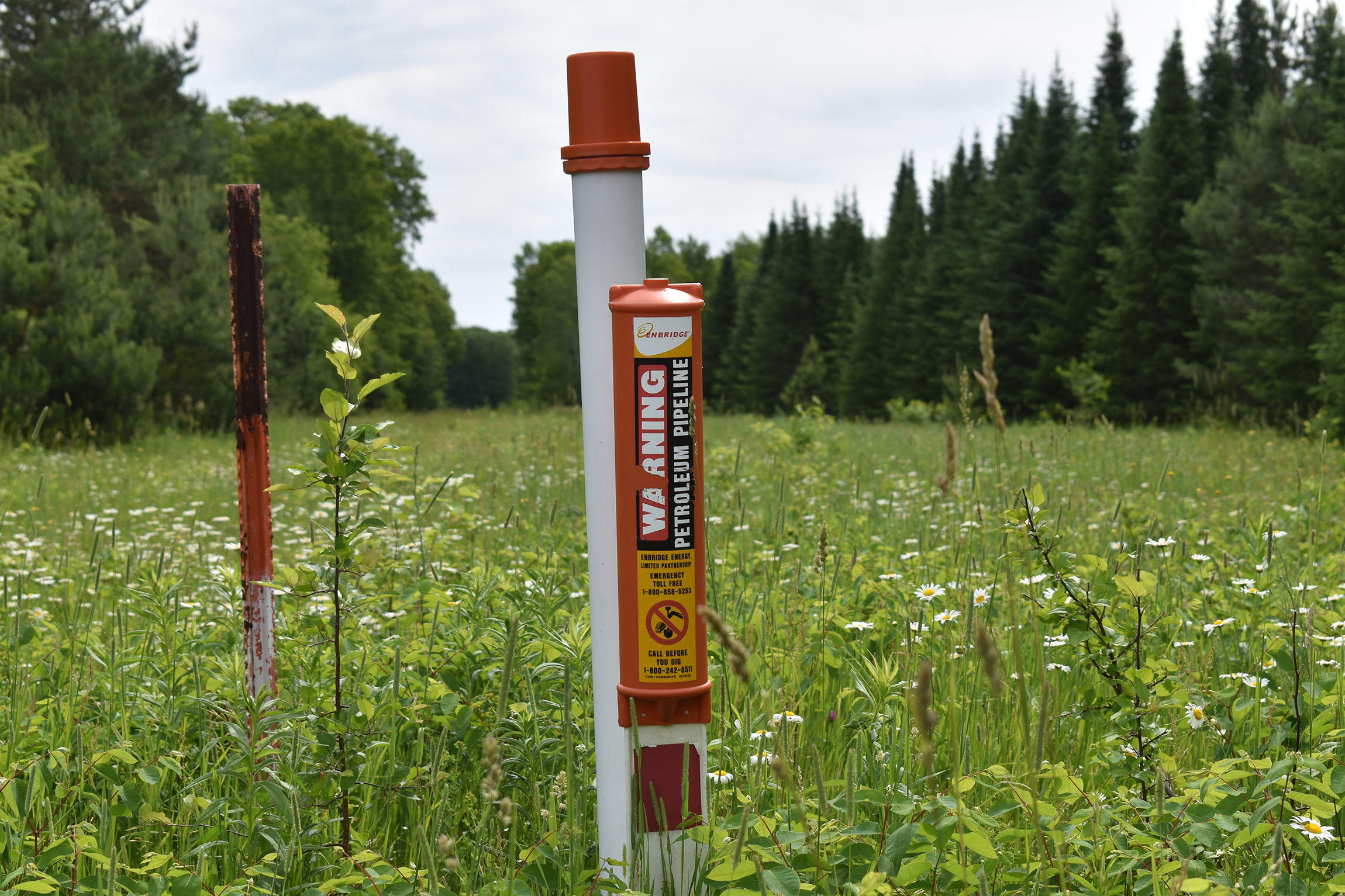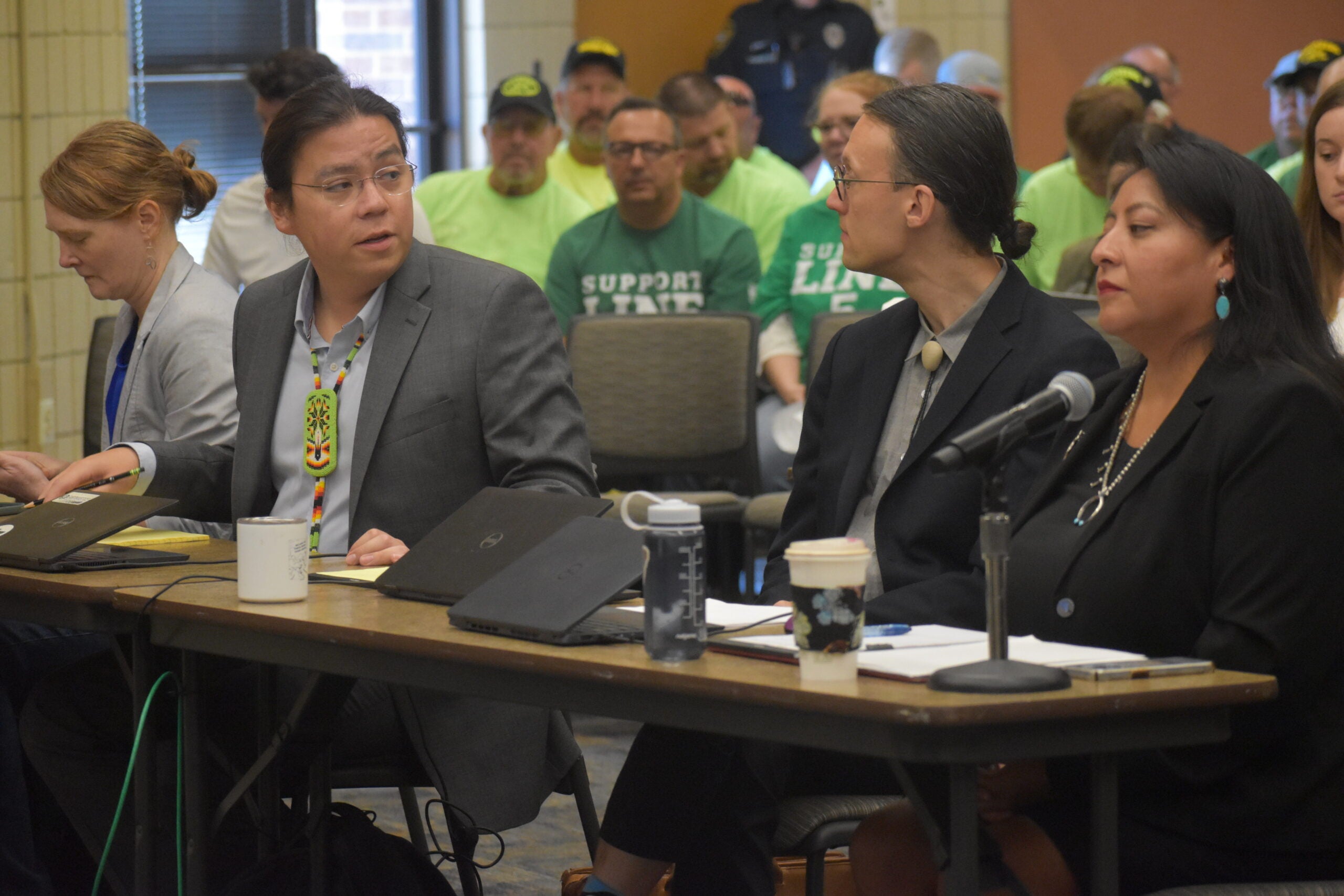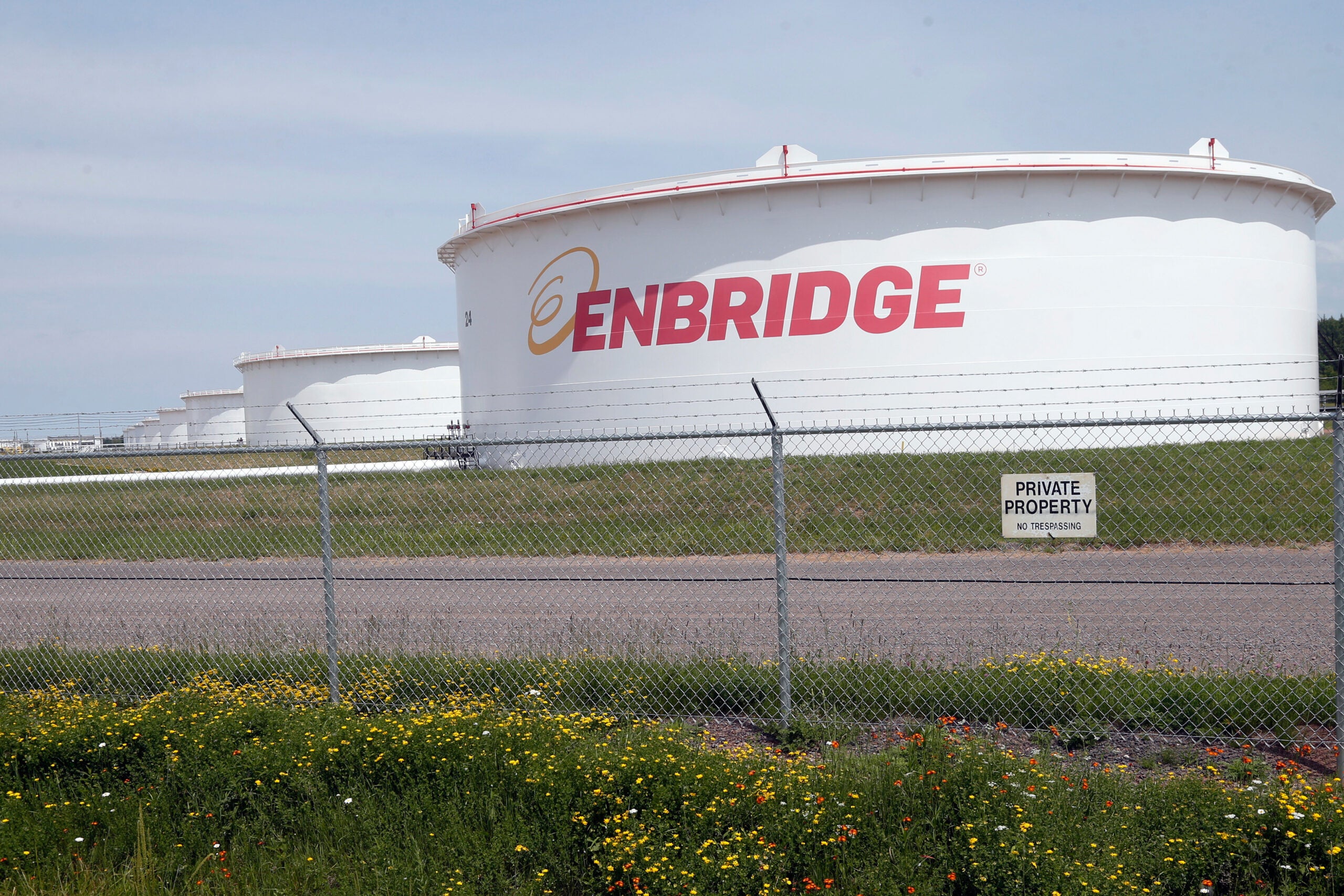Michigan Gov. Gretchen Whitmer wants Enbridge to shut down Line 5 running under the Straits of Mackinac until the company proves it can operate safely after Enbridge reported Friday an anchor support had significant damage. The pipeline carries up to 23 million gallons of oil and natural gas liquids from Superior to Sarnia, Ontario.
The 67-year-old Line 5 splits into two 20-inch pipelines for roughly four miles under the Straits connecting Lakes Michigan and Huron. The dual pipelines were shut down Thursday after the company discovered an anchor support had shifted position. Enbridge resumed operation of the west leg of Line 5 on Saturday afternoon after it said damage was isolated to an anchor support on the east segment of the pipeline.
“The east leg will remain shut down,” said Enbridge spokesman Ryan Duffy in a statement. “Our federal regulator, (Pipeline and Hazardous Materials Safety Administration), has no objections to this plan.”
News with a little more humanity
WPR’s “Wisconsin Today” newsletter keeps you connected to the state you love without feeling overwhelmed. No paywall. No agenda. No corporate filter.
Gov. Whitmer said in a letter Saturday she was “taken aback” that Enbridge had resumed partial operation of Line 5 without discussion.
“At this moment, Enbridge is pumping crude through the Great Lakes on state-owned bottomlands without any explanation for the cause of this damage to the pipeline structure and no assurance that Enbridge has taken sufficient steps to mitigate future harm,” wrote Whitmer.
Gov. Whitmer has requested a report on the cause of the damage, as well as prevention measures the company has put in place. She wants an independent third-party to review all the evidence before Line 5 resumes normal operations. Enbridge CEO Al Monaco said in a letter that the company would share what it learns about the anchor damage.
Michigan’s governor said Enbridge was disregarding its obligation to operate Line 5 with “due care” under its 1953 easement agreement with the State of Michigan. Michigan Attorney General Dana Nessel sued the company last year, saying the aging pipeline threatens the Great Lakes.
A federal appeals court ruled earlier this month in a case involving a separate lawsuit that the company’s oil spill response plans in the Straits meet the legal standard for review. The Michigan Court of Appeals also upheld the constitutionality of a law that would allow Enbridge to build a roughy $500 million tunnel to house a new pipeline under the Straits.
The National Wildlife Federation said Line 5 has experienced at least 33 spills on land after the environmental group reviewed federal pipeline safety data. Great Lakes Regional Executive Director Mike Shriberg said in a statement Friday that the incident should mark the end for Line 5.
“How many more shoes have to drop until we stop putting the Great Lakes, our drinking water, our economy and our way of life at risk?” wrote Shriberg.
Enbridge was fined $6.7 million by the U.S. Environmental Protection Agency on Thursday for failing to swiftly address pipeline safety requirements laid out in a 2017 consent decree. The agreement is part of a $177 million settlement reached with Enbridge after 2010 oil spills, including the Kalamazoo River spill in Michigan. The company has said its invested billions of dollars in safety improvements and trainings since then.
In Wisconsin, the company plans to reroute Line 5 outside the Bad River Band of Lake Superior Chippewa’s reservation in response to a federal lawsuit filed by the tribe last year. Enbridge is seeking permits for the pipeline relocation project. The Wisconsin Department of Natural Resources will hold a virtual public hearing on the project’s waterway and wetland permit on Wednesday, July 1.
Wisconsin Public Radio, © Copyright 2026, Board of Regents of the University of Wisconsin System and Wisconsin Educational Communications Board.



